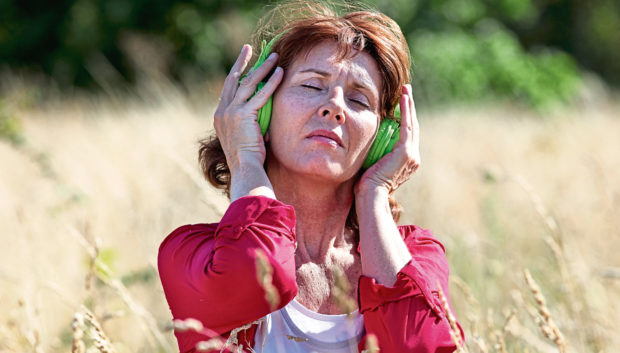
Could the Rolling Stones help people recover from a stroke?
Would a little bit of Brahms or Beethoven help them recover their impaired cognitive abilities more effectively?
That’s what researchers and clinicians from the universities of Glasgow, Edinburgh and East Anglia, and NHS Greater Glasgow & Clyde, were investigating in a new study.
Their research investigated the effects of combining music listening and mindfulness techniques on recovery after a stroke.
The “Measuring the effects of listening for leisure on outcome after stroke” – appropriately shortened to MELLO – study involved 72 participants recruited from acute stroke units.
Each patient had suffered an ischemic stroke, the most common type of stroke which is caused when blood supply to the brain is blocked.
In the study, participants were randomly allocated into three groups. One group was asked to listen to music, another to music combined with mindfulness practice, and the last group to audiobooks.
Participants used an iPod and were asked to listen for an hour each day for eight weeks during their recovery immediately after discharge from hospital.
Each participant was free to choose their preferred music or books, and kept a daily written record of their listening activity.
They had a weekly visit from the research team during which progress was monitored and new listening material was provided.
The participants in the mindfulness group were taught two five-minute exercises designed to encourage them to return their attention to the present moment, and then on the music if their mind wandered while listening.
They also conducted standardised tests of memory, attention and mood at the beginning of the study, at then at three and six months after stroke to determine how each participant’s cognitive functions and mood changed as a result of their listening.
In interviews at the end of the eight-week listening phase, participants in the mindful music listening group reported that listening helped them to relax, to focus and concentrate and to manage emotions.
Patients in the music-listening group often said that the music increased their activity levels, while those in both music-listening groups talked of how music stimulated recall of memories from the past.
On the standardised tests of cognitive function, participants in both of the music-listening groups showed better recovery of memory functions compared to the audiobook group, and there was a positive impact on mood reported.
Dr Satu Baylan, in charge of the study, says: “People who have suffered a stroke are often left with cognitive difficulties that affect the ability to concentrate and remember information, yet there is limited rehabilitation input for these problems.
“Many people also experience low mood and anxiety, which can have a negative impact on recovery and their level of engagement in everyday activities.
“Previous research has suggested that daily music listening might improve memory and attention after stroke.
“Mindfulness, on the other hand, is known to improve mood in the general population and in those with depression but there is very little examination of mindfulness in people after stroke.
“We were keen to investigate whether combining music listening with mindfulness might help address some of the difficulties that people commonly face after a stroke, using an approach that can potentially be both enjoyable and accessible.
“The results suggest that this may indeed be the case. We found that participants across all groups were willing to listen regularly and found listening to be enjoyable.
“We were very pleased that participants in the mindful music group felt that they were better able to refocus their attention.
“We think that the intentional focus of mindfulness during listening, which encourages people to place themselves in the here-and-now when their mind wanders, might help individuals affected by stroke improve their concentration and reduce rumination in negative thoughts and feelings.
“This may also help with their ability to recall information from memory.”
Professor Jonathan Evans, the principal investigator, adds: “This is a low-cost intervention, which can be done at home and we now want to examine whether music listening – with or without mindfulness – could be used even earlier, in inpatient hospital settings.
“Many of the mindful-listening participants chose to listen to classical or easy-listening music whereas pop and rock were most often chosen by those in the other music group.
“We’d also like to investigate whether music with lyrics may help patients with aphasia, which limits their ability to understand or use words, more quickly recover their language skills.”


Enjoy the convenience of having The Sunday Post delivered as a digital ePaper straight to your smartphone, tablet or computer.
Subscribe for only £5.49 a month and enjoy all the benefits of the printed paper as a digital replica.
Subscribe